- Kenmore refrigerator water filters
- Whirlpool refrigerator water filters
- Samsung refrigerator water filters
- GE refrigerator water filters
- LG refrigerator water filters
- Frigidaire refrigerator water filters
- KitchenAid refrigerator water filters
- Maytag refrigerator water filters
- Kenmore Elite refrigerator water filters
- Estate refrigerator water filters
- GE Profile refrigerator water filters
- Amana refrigerator water filters
- Bosch refrigerator water filters
- Dacor refrigerator water filters
- Electrolux refrigerator water filters
How to install an ice maker kit in a top-freezer refrigerator

This DIY repair guide gives step-by-step instructions for installing an optional ice maker kit in a compatible top-freezer refrigerator in a refrigerator without a factory-installed ice maker. The ice maker kit includes the ice maker module, water inlet valve, ice maker water supply tube and hardware.
The kit shown in this video fits Kenmore and Frigidaire top-freezer refrigerators. This basic installation procedure is common for installing ice maker kits in Whirlpool, GE, Maytag, Amana, KitchenAid, Gibson, Crosley, LG and Electrolux top-freezer refrigerators.
Quick links
Video
Instructions
Tools required
Work gloves
Nut driver set
Slot screwdriver
Phillips screwdriver
Putty knife
Needle nose pliers
Repair difficulty
Time required
15 minutes or less
Repair difficulty
Time required
15 minutes or less
Installing an ice maker kit in a top-freezer refrigerator video.
How to install an ice maker kit in a top-freezer refrigerator video.
Instructions
- 01.
Connect the water supply line
Connect the water supply connection line to your house water supply.
- 02.
Shut off the power
Safely store any food that could deteriorate while the refrigerator is off.
Unplug the power cord from the wall outlet.
Wear work gloves to protect your hands.
- 03.
Prepare the freezer compartment
Remove the spacer in the freezer shelf.
Push the shelf to the left to release the right side of the shelf from the holes.
Pull the shelf out of the freezer.
Pry out the two plastic plugs from the freezer side wall using a putty knife.
Release the locking tab and pull off the plastic cover over the wire harness connector and fill tube opening on the evaporator cover.
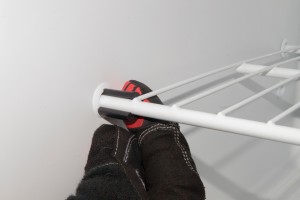
PHOTO: Remove the freezer shelf spacer.

PHOTO: Remove the shelf.
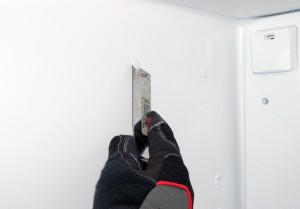
PHOTO: Pry out the plastic hole plug.
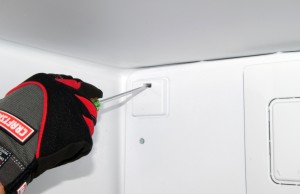
PHOTO: Release the harness cover locking tab.
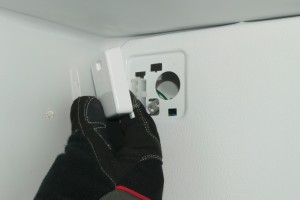
PHOTO: Pull the cover off.
- 04.
Prepare the back of the refrigerator
Pull the refrigerator away from the wall.
Remove the screws from the rear compartment cover and then remove the cover.
Punch out the cutout for the water supply line in the rear compartment cover.
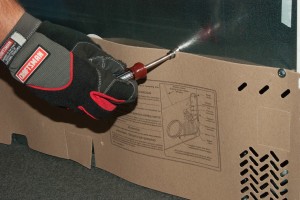
PHOTO: Remove the cover screws.
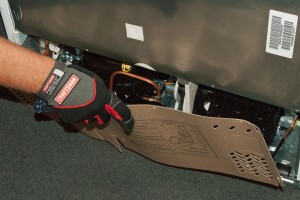
PHOTO: Remove the rear cover.
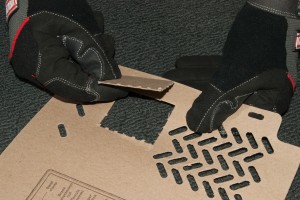
PHOTO: Remove the water valve cutout.
- 05.
Install the ice maker water supply line
Peel off the label over the ice maker water line opening on the upper right corner of the outside back panel of the refrigerator.
Pull the foam plug out of the water line opening.
Insert the water inlet tube into the cabinet hole and lock the water inlet tube into place.
Push the black tube seal onto the water tube threads.
Thread the water supply line nylon compression nut onto the threaded end of the water inlet tube.
Tighten the compression nut to finger tight and then tighten the nut another 1/2 turn using a wrench. Do not overtighten the compression nut.
Tip: Insert the water inlet tube through the cabinet hole until the flat surface of the inlet tube is tight against the back of the refrigerator. Slightly rotate the tube and until it catches and locks in place.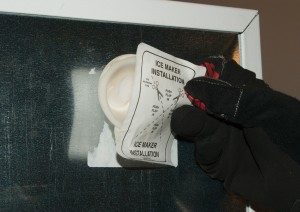
PHOTO: Peel off the label.
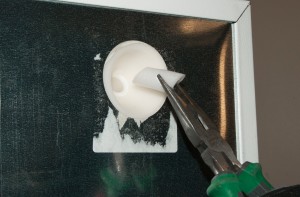
PHOTO: Pull out the foam plug.
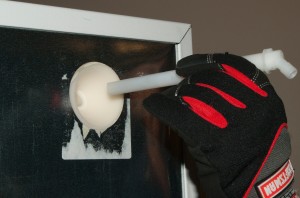
PHOTO: Push the water inlet tube into the cabinet hole.
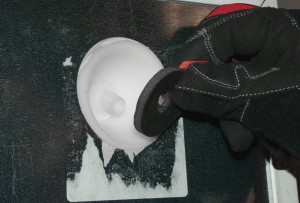
PHOTO: Push the tube seal on the water tube threads.
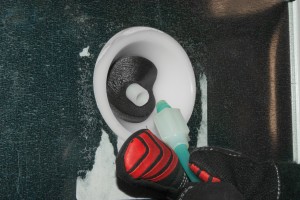
PHOTO: Connect the water supply line.
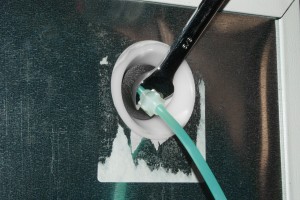
PHOTO: Tighten the compression nut.
- 06.
Install the ice maker in the freezer
Install the adjustable leveling bracket on the bottom of the ice maker. Leave the mounting screw loose; you’ll tighten it later.
Install the mounting screws into the side freezer wall leaving enough clearance to hang the ice maker bracket on the screws.
Plug in the ice maker wire harness.
Push the plastic wire harness cover over the plug and snap the cover into place.
Hang the ice maker on the mounting screws. Make sure the fill tube sits inside the fill cup.
Tighten the mounting screws.
Adjust the leveling bracket so the gap between the freezer wall and the ice maker is equal at the top and bottom of the ice maker.
Tighten the leveling bracket mounting screw when the ice maker is level.
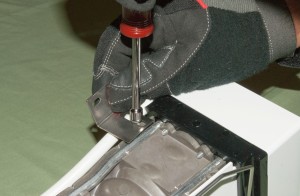
PHOTO: Install the leveling bracket.
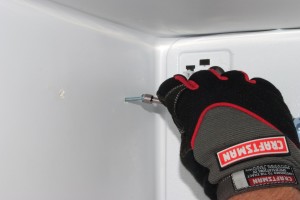
PHOTO: Install the mounting screws.
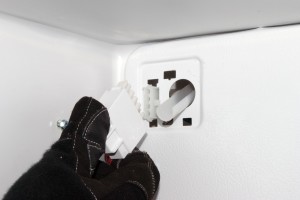
PHOTO: Plug in the wire harness.
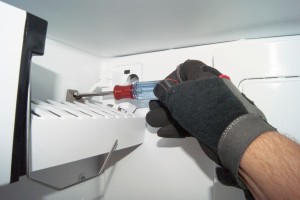
PHOTO: Tighten the mounting screws.
- 07.
Install the ice container
Reinstall the freezer shelf in the lower position.
Set the ice container on the shelf under the ice maker.
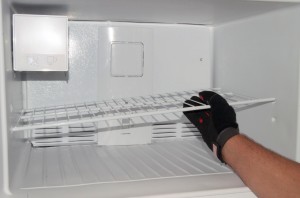
PHOTO: Reinstall the freezer shelf.

PHOTO: Install the ice bucket.
- 08.
Install the inlet water valve
Push the ice maker water supply line firmly into the outlet fitting on the inlet water valve until the water line hits the bottom. Tug the water line to make sure it's locked into the fitting.
Connect the wire harness to the inlet water valve.
Align the valve mounting bracket with the mounting holes and attach the valve using the mounting screws.
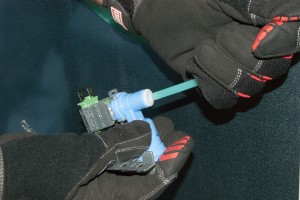
PHOTO: Push the water line into the valve.
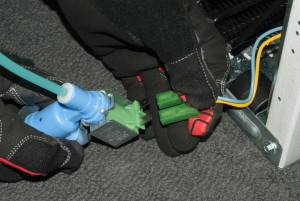
PHOTO: Connect the valve wire harness.
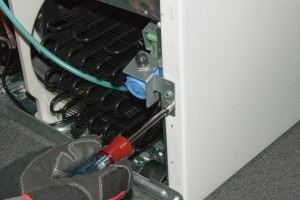
PHOTO: Attach the water inlet valve.
- 09.
Install the water supply line clamps
Clean the mounting area for the plastic supply line clamps using rubbing alcohol or soapy water. Dry the areas thoroughly before installing the clamps.
Install the plastic supply line clamps on the cabinet.
Mount the plastic water tubing to the rear of the cabinet using the two plastic clamps.
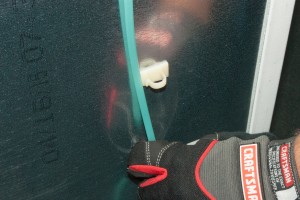
PHOTO: Mount the plastic water supply line.
- 10.
Connect the refrigerator water supply line
Position the rear compartment cover on the back of the refrigerator and reinstall the mounting screws.
Remove the black rubber cap from the water supply line fitting.
Connect the water line onto the water inlet valve fitting and firmly tighten the compression nut.
Open the water supply cut-off valve.
If the fitting leaks, tighten the compression nut and check again.
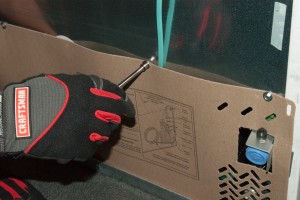
PHOTO: Reinstall the rear cover.
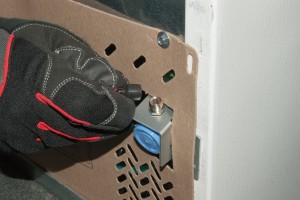
PHOTO: Remove the black rubber cap.
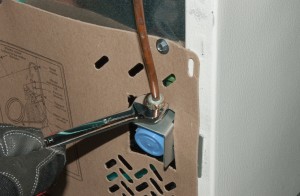
PHOTO: Connect the water supply line.
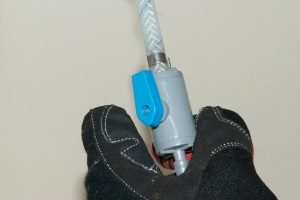
PHOTO: Open the water supply valve.
- 11.
Restore electrical power
Plug in the refrigerator and push it back into place.
Warning: Undertaking repairs or maintenance to appliances or power equipment can be hazardous. Should you choose to undertake repairs or maintenance, you are assuming the risk of injury to your person or property. In an effort to reduce the risk, use the proper tools and safety equipment noted in the applicable guide and follow all instructions. Do not proceed until you are confident that you understand all of the steps and are capable of completing the repair. Some repairs or maintenance, however, should only be performed by a qualified technician.
Most common symptoms to help you fix your refrigerators
Choose a symptom to see related refrigerator repairs.
Main causes: control board or cold control failure, broken compressor start relay, compressor motor failure, defrost tim…
Main causes: jammed ice cubes, broken ice maker assembly, dirty water filter, kinked water line, bad water valve, freeze…
Main causes: water valve leaking, frozen or broken defrost drain tube, overflowing drain pan, cracked water system tubin…
Main causes: damaged door seal, faulty defrost sensor or bi-metal thermostat, broken defrost heater, bad defrost timer o…
Main causes: blocked vents, defrost system problems, evaporator fan failure, dirty condenser coils, bad sensors, condens…
Main causes: blocked air vents, compressor problems, condenser or evaporator fan not working, control system failure, se…
Main causes: leaky door gasket, defrost system failure, evaporator fan not running, dirty condenser coils, condenser fan…
Things to do: clean condenser coils, replace the water filter, clean the interior, adjust doors to prevent air leaks, cl…
Most common repair guides to help fix your refrigerators
These step-by-step repair guides will help you safely fix what’s broken on your refrigerator.
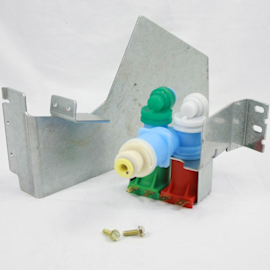
How to replace a refrigerator water valve
Replace the water valve that feeds water to the ice maker and water dispenser if it no longer controls the flow of water…
Repair difficulty
Time required
15 minutes or less

How to clean refrigerator condenser coils
Help your refrigerator run more efficiently by cleaning the condenser coils. It's easy and takes just a few minutes.…
Repair difficulty
Time required
15 minutes or less
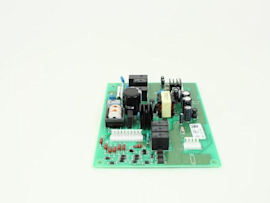
How to replace a refrigerator temperature control board
If the temperature in your refrigerator doesn't match the temperature you set, the problem could be the temperature cont…
Repair difficulty
Time required
30 minutes or less
Effective articles & videos to help repair your refrigerators
Use the advice and tips in these articles and videos to get the most out of your refrigerator.
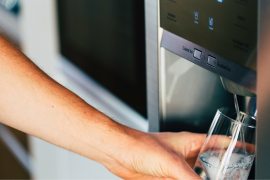
No matter what style Maytag refrigerator you have, we can walk you through replacing the water filter.…

Learn about all the convenient features on our Sears PartsDirect website that make your parts purchases easier.…

Get tips and advice on replacing the water filter in your LG refrigerator.…